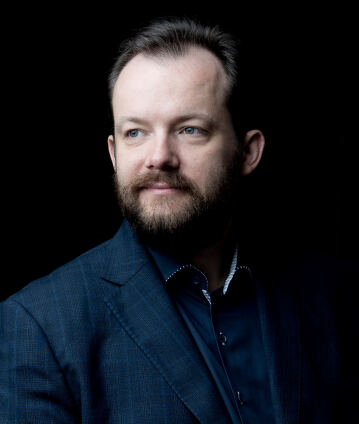Andris Nelsons conducts Shostakovich’s Tenth

Andris Nelsons also presented a symphony by Dmitri Shostakovich when he made his spectacular debut with the orchestra 15 years ago, and since then he has not missed a single season with the Berliner Philharmoniker as a guest conductor. In this concert, Nelsons can finally be heard conducting the complex Tenth, in which the composer ruthlessly settles scores with the Stalin regime. Antonín Dvořák’s rapturous Violin Concerto with soloist Benjamin Beilman completes the programme, which opens with Marcel Dupré’s Cortège et Litanie, a work for organ.
As if the organ were not complex enough with its manuals, pedals and registers, it seems to attract people who are looking for even greater challenges: Jan Liebermann, born in 2005, prefers to play his wide repertoire from memory – just like Marcel Dupré did in his day. The world-renowned composer, organist and teacher performed all of Johann Sebastian Bach’s organ works without sheet music in 1920. Here, the two virtuosos come together as Liebermann performs Dupré’s Cortège et Litanie – a devotional choral procession that blends with a more lively prayer.
“Would you like to write me a violin concerto? Something quite original, rich in cantilenas and suitable for good violinists? Please let me know!” Antonín Dvořák fulfilled this request from his publisher Fritz Simrock in 1879. However, the violinist Joseph Joachim, who the composer consulted, changed the first draft so thoroughly that Dvořák finally complained: “I haven’t been able to keep a single bar.” The premiere did not take place until 1883 – and Joachim wasn’t even the soloist. In his place, František Ondříček played the solo part, which is peppered with virtuoso cadenzas and traditional dance tunes, and whose resting point is the heartfelt second movement. Hilary Hahn has had to cancel her guest appearance due to injury. She will be replaced by Benjamin Beilman, who has already performed with the Berliner Philharmoniker during their 2024 tour of the USA.
Andris Nelsons, long-standing partner of the Berliner Philharmoniker, then conducts Dmitri Shostakovich’s Tenth Symphony. The haunting lamentations of isolated wind instruments at the beginning – symbolising the oppressed individual – are contrasted with the brutal sound machinery of the scherzo, which the composer himself is said to have described as a “portrait of Stalin”. Published in December 1953, shortly after the dictator’s death, this work is a reckoning and self-assertion by the previously humiliated Shostakovich – his name motif “DSCH” (D, E-flat, C, B natural) is omnipresent even in the grotesque Stalin scherzo, and triumphs at the end.
© 2025 Berlin Phil Media GmbH